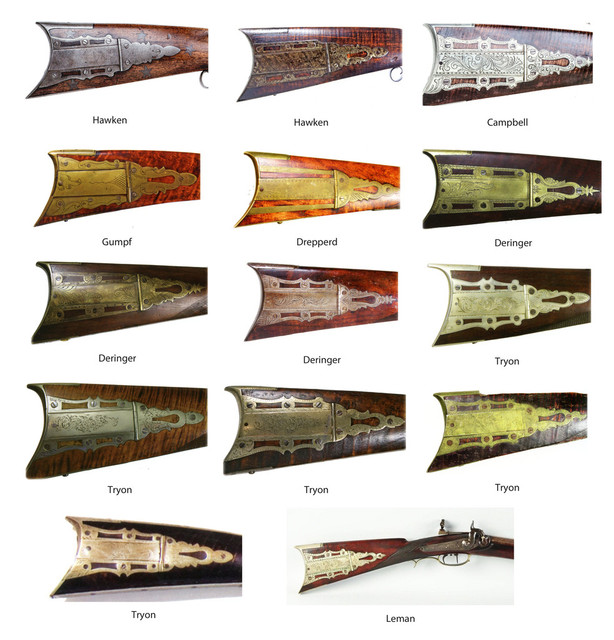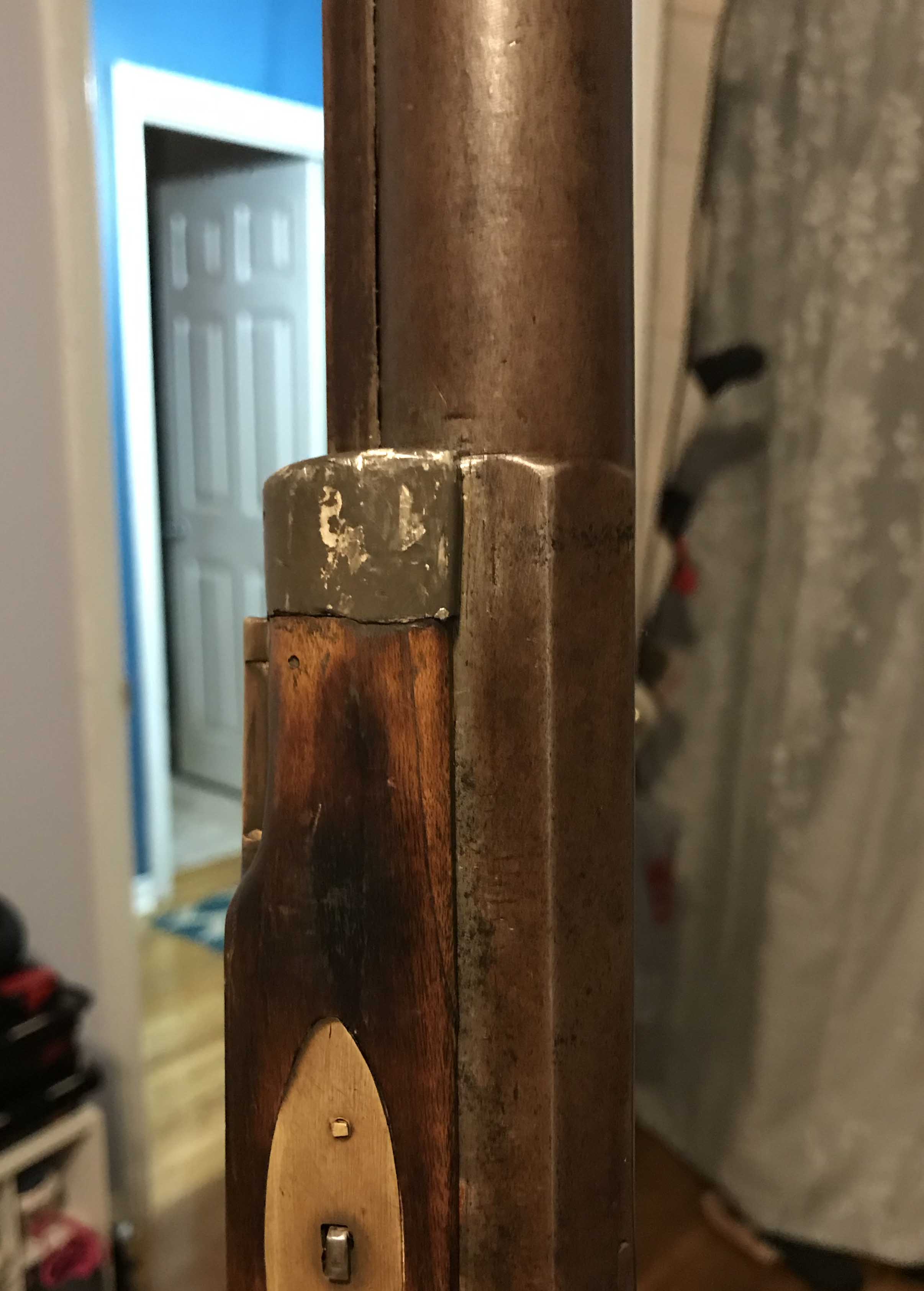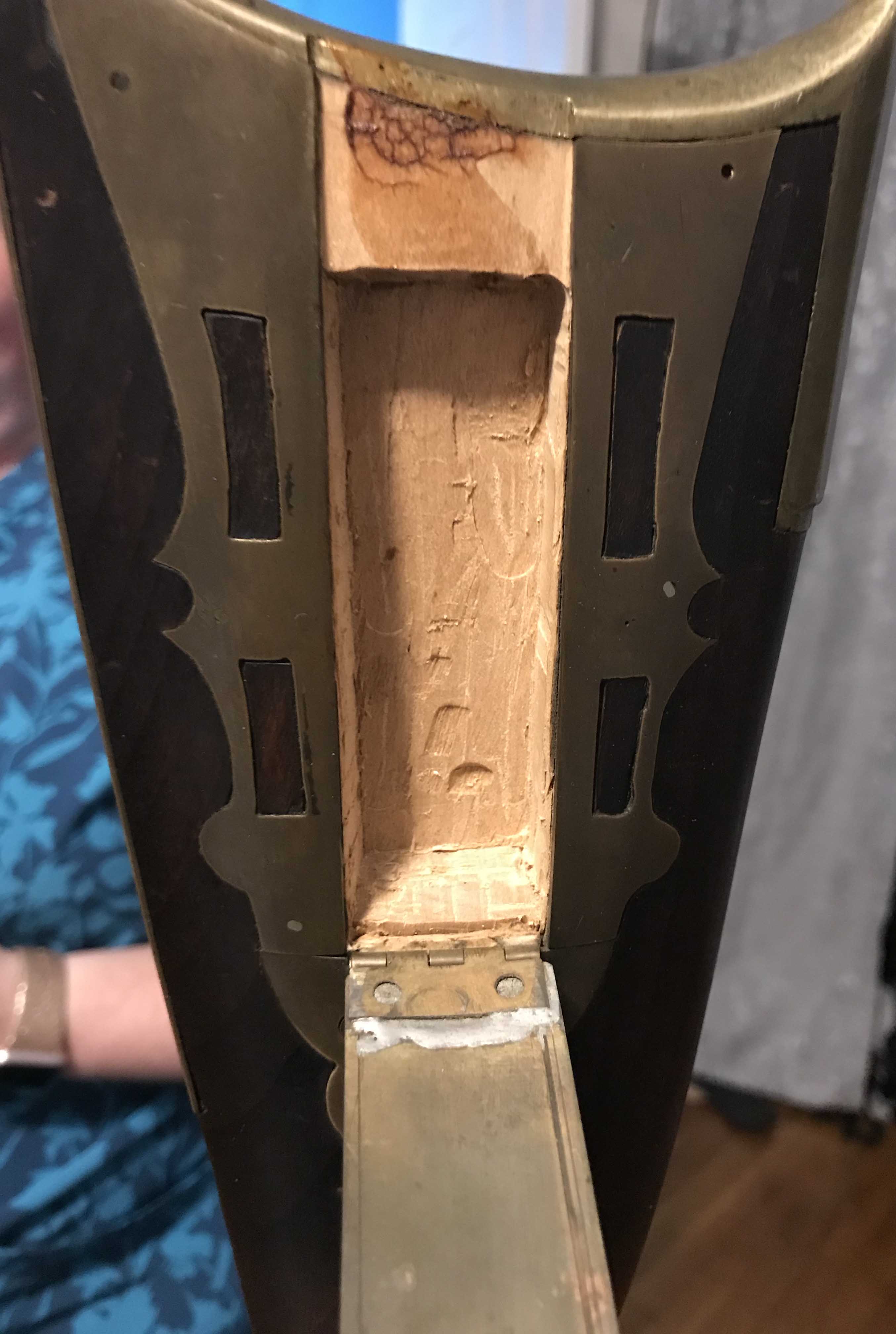Soxlocke
32 Cal
Hello All,
I just joined this group because it seems like a very knowledgable community and I'm looking for some info on a gun I just picked up for a STEAL at a local pawn-shop. The owner had no idea what it was because the pitting on the lock plate made the manufacturer’s name very hard to read.
See link for images:
It has a broken half-stock and is missing the powder drum, ramrod, and sights. Other than that, everything seems to be here. I discovered the broken stock when I disassembled it hunting for markings so I could learn more. (It was there before I did anything I swear! Haha) The ONLY markings I could find or at least discern on the rifle were the letters “LEMAN LANCASTER, PA” on the lock. Using my extensive google knowledge I was able to determine that it is likely a Leman Trade Rifle. I haven’t determined its caliber yet. Seems like it might be .50 cal. The barrel is VERY heavy and measures 29.5" long.
I understand there are some reproduction parts out there, so I’m considering getting replacements. I’d love to restore this gun, but I also don’t want to ruin it’s value. Before I take it apart much further, I wanted to get some expert insight and I appreciate any you’d be willing to offer me.
I only paid $80 for it, so I figure
A) I can restore it and use it for muzzle loading season and/or reenactments or
B) this sucker is worth more than I realize and I’ll keep it just like it is and re-sell it.
I just joined this group because it seems like a very knowledgable community and I'm looking for some info on a gun I just picked up for a STEAL at a local pawn-shop. The owner had no idea what it was because the pitting on the lock plate made the manufacturer’s name very hard to read.
See link for images:
It has a broken half-stock and is missing the powder drum, ramrod, and sights. Other than that, everything seems to be here. I discovered the broken stock when I disassembled it hunting for markings so I could learn more. (It was there before I did anything I swear! Haha) The ONLY markings I could find or at least discern on the rifle were the letters “LEMAN LANCASTER, PA” on the lock. Using my extensive google knowledge I was able to determine that it is likely a Leman Trade Rifle. I haven’t determined its caliber yet. Seems like it might be .50 cal. The barrel is VERY heavy and measures 29.5" long.
I understand there are some reproduction parts out there, so I’m considering getting replacements. I’d love to restore this gun, but I also don’t want to ruin it’s value. Before I take it apart much further, I wanted to get some expert insight and I appreciate any you’d be willing to offer me.
I only paid $80 for it, so I figure
A) I can restore it and use it for muzzle loading season and/or reenactments or
B) this sucker is worth more than I realize and I’ll keep it just like it is and re-sell it.















